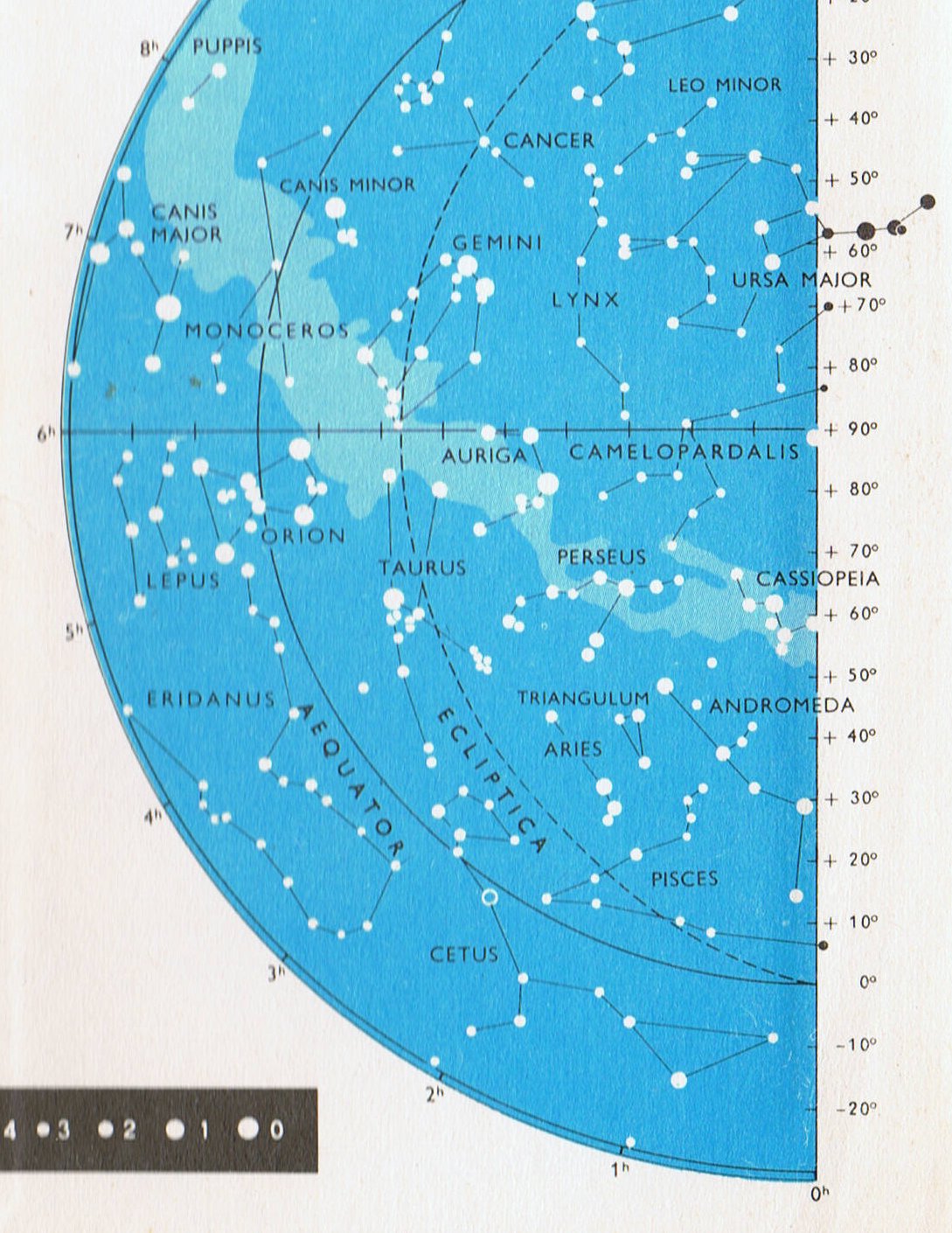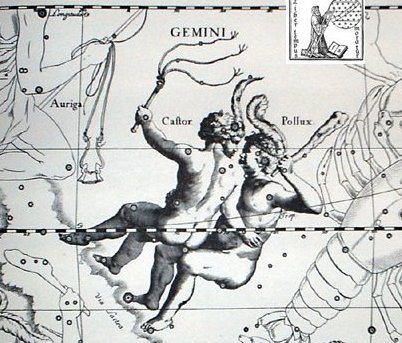|
2. I think the Milky Way once was used to define the border ('the wall') between winter and summer. By counting 72 years for each day the precession since then has moved spring equinox backwards among the constellations and it ought to be possible to see when this beautiful cosmic order could have been seen in the sky. 6h is ca 90 days (365¼ / 4 = 91.3215) beyond the present position of spring equinox, i.e. at midsummer (181 - 89 = 92). The prominent stars which for us are rising heliacally at midsummer evidently correspond to these glyphs:
Betelgeuze is close to the Milky Way. This means Betelgeuze would have been at the end of winter ca 26000 / 4 = 6500 years ago, around 4500 B.C. Beyond Betelgeuze the Milky Way will be like an obstacle, a 'wall', and winter should stop there. But there might be a tiny 'door' somewhere which could allow the seed of next winter to penetrate. Praja-pāti (Lord of Created Beings) and Menkalinan, δ respectively β Aurigae, are though better markers than Betelgeuze because they are not located below the ecliptic path of Sun. Furthermore, they rise together and an imaginary line between them can be used to define direction, where to find the line of right ascension 6h (today) or 0h (around 4500 B.C.) in the sky roof. However, they are on the other side of the River, in the summer half of the year according to my idea of the ancient view. Mahashim, θ Aurigae, is also rising at this time and is more easy to see (at least at present) than the faint Praja-pāti. It is also closer to the ecliptic. But γ and η Columbae are too far south, one would think, to have any relevance for Sun. Unless he will be forced downwards by the River. A picture from my astronomy book is useful:
Elnath (β Tauri) at the tip of the Bull's northern horn is rising earlier, and at this high declination the winding Milky Way is reached earlier than at Betelgeuze:
The creator of the G text (and presumably also those who built the great pyramids at Giza) used Elnath as a marker of where the River (the wall) is encountered. But there might have been a bridge, a ferry or some other means available to pass from Elnath to Menkalinan, because Elnath is also a star of Auriga:
The Whip stars (ψ Aurigae) are rising in the days of Canopus and they might get things running again:
The Chinese constellation Heavenly Gate (Tien Kwan) is at ζ Tauri (and moe at Ga1-20), at the tip of the Bull's southern horn, which seems to be inside the River. Possibly it could therefore allow souls to migrate. From Ga1-20 to Ga2-1 there are 11 ('one more') days and the spirits can come alive again through the burning sensations caused by the whips. Beyond the Milky Way Gemini is a marker of liberation from the River. Though according to Hevelius the left foot of Castor (as viewed from the outside of the celestial globe) is still inside:
Counting with Alhena (γ Gemini at the right foot of Pollux) as the point of emergence it could mean a spring equinox about 104.8 * 72 = ca 7500 years ago:
The 'wall' of our galaxy presumably extends from Ga1-20 to Ga2-11 or for 3 weeks (and Ga1-20 is 3 weeks from the beginning of the text). The Twins which emerge could represent the next generation of 'years' (summer and winter). What lies ahead? Anciently the summer 'year' was about to be born and life begin anew. The constellation ahead is the female Cancer and this constellation contains the mysterious origin of the new life.
The 'living spirit' (manu rere) of summer could arrive from the mouth of Ursa Major:
Ga3-14 is a marker of π. |
|||||||||||||||||||||||||||||||||||||||||||||||||||||||||||||||||||||||||||||||||||||||||||||||||||||||||||||||||||||
















